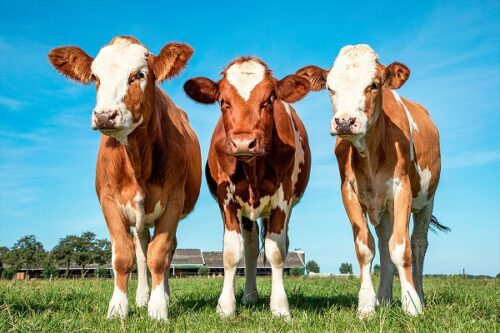11 January 2023
Rendering is the practice of collecting animal by-products including bone, fat and animal hides for processing into useful products. Rendering stabilises the proteins through heat and tanning stabilises proteins through chemistry. Both rendering and tanning make use of by-products that would otherwise be wasted. Products of the rendering industry include pet food, animal feed and cosmetics. According to an article by the Sustainability Alliance in the USA, “the rendering and leather industries come into their own in ways that reduce environmental impact, benefit the economy and are, most probably, the ultimate in sustainability”. Report by One 4 Leather.

Sustainable leather
With a history going back hundreds if not thousands of years, the rendering industry is actually one of the world’s original recyclers. It provides a service that ensures that virtually no part of an animal raised for meat production goes to waste. In the words of Jennifer M Latzke (Editor of the Kansas Farmer), “Rendering finds a sustainable and high-value purpose for every part of the cow but the ‘moo’”. That is not just an economic benefit but has a moral element to it too: waste not want not! Or as Leather and Hide Council of America (LHCA) President Stephen Sothmann puts it, “As long as we produce livestock for meat and dairy consumption purposes, animal hides and skins are going to be a natural and inevitable by-product of the process. We, as a society, have an ethical responsibility to use those materials and not be wasteful.” There is a practical argument to this too: Jennifer M Latzke points out that “without the rendering industry, America would fill up every one of its landfills to capacity in just four years”. So, whichever way you look at it, rendering renders us all a great service.
Economic benefits
A useful factsheet from the Sustainability Alliance puts the scale of the effort in proportion. It says, for instance, that “in the US, the hide, skin and leather industry was able to make use of more than 30 million cattle hides in 2016, resulting in nearly 908,000 tonnes and €36.4 million saved in waste management in just one year”. Processing is also becoming more environmentally friendly thanks to renewable tanning chemicals, along with reduced water consumption and salt usage.
Less sustainable alternatives
As we have reported before “rendering of by-products is part of the animal’s full lifecycle, which starts at the farm. It is a sign of respect to use everything and not just let it go to waste.” Those advocating alternatives for leather tend to overlook this as well as the environmental impacts of not using the available hides. The alternatives they propose are often plastic-based and dependent on a non-renewal resource like oil. In addition, those plastics do not bio-degrade and so will present an environmental risk for thousands of years to come.
The ultimate form of recycling
The rendering and leather industries are the original recyclers. Today, as sustainability becomes the by-word of the modern era and we all make efforts in our everyday lives to behave more responsibly in terms of our consumption, it’s high time leather, in particular, was recognised as being the ultimate form of recycling.
我们为皮革、物料及时装业界创造面对面洽谈的机会,为客户缔造实质商机。我们云集世界各地的商家,让他们寻找新的合作伙伴,发掘潜在客户或供应商,并掌握业界最新发展。
我们主办多个专注时尚及生活潮流的商贸展览会, 为这不断变化的行业,提供最全面的买家及参展商服务,方便他们了解急速转变的行业环境,并预测来季趋势。

使用条款 | 隐私政策 | APLF 可持续发展